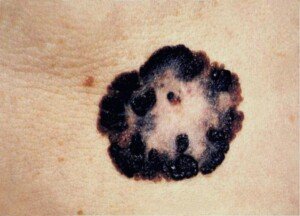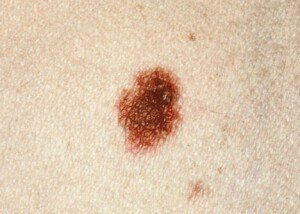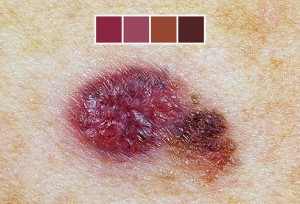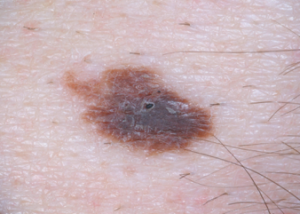
Here’s how to make sure a dermatologist is doing everything possible to check your skin and moles for signs of melanoma.
There is so much more to a skin cancer exam than just a doctor looking at your skin and moles.
Don’t be afraid to ask your dermatologist to take special note of any moles or spots that have your particularly concerned.
How a Dermatologist Checks for Melanoma
“Any physician would exercise an abundance of precaution and evaluate the risk factors for any individual patient — including skin type, history of sunburns, any family history of skin cancer, melanoma or dysplastic nevus syndrome (DNS),” explains Sharyn Laughlin, MD, board certified dermatologist and co-founder of the DermaEnvy Skincare ™ line of sun protection products and medical director of Laserderm, a pioneering laser skin surgery clinic in Ottawa, Ontario, Canada.
Dr. Laughlin continues, “The patient may have had atypical moles herself or skin cancer.
“It’s important to take into consideration if they have any other skin diseases like psoriasis, eczema, forms of contact dermatitis, allergies and trauma.”
An atypical mole is defined as one that is simply more likely to transition to melanoma than other moles on that person’s body.
This does not mean it WILL turn malignant; only that it has a higher likelihood.

Atypical mole. Cancer.gov
DNS – dysplastic nevus syndrome – is a condition in which a person had a large number of “funny looking” moles.
Nevus is the medical term for mole and is pronounced “nee-vus.” The plural is nevi (rhymes with Levi).
“Secondly, the assessment of the patient will involve a full body examination with photography for mole mapping where necessary,” says Dr. Laughlin.
“This will be invaluable in the patient with multiple moles and a family history of melanoma or DNS as a reference point for future evaluation.
“The complete examination will assess and categorize each mole to a specific type including junctional, compound, intradermal or congenital nevi.
“We are looking for any moles that fit what we call the ‘ugly duckling,’ which we would then examine closely with a magnifying instrument in the office called a dermatoscope.”

And it’s perfectly fine to request that your dermatologist use a dermatoscope for all of your moles, if for no other reason, to give you more peace of mind.
With the heightened awareness campaigns for melanoma, it’s easy to become overly anxious about your moles or any new spots that appear on your skin.
Even though the recommendation for the typical healthy adult is to have a clinical skin exam once a year, you can have one every six months if this is more reassuring.
Mole mapping can be very reassuring.
 In practice for 30+ years, Dr. Laughlin has been lead or co-investigator in many research trials and an innovator in developing new laser technology. dermaenvy.com.
In practice for 30+ years, Dr. Laughlin has been lead or co-investigator in many research trials and an innovator in developing new laser technology. dermaenvy.com.
 Lorra Garrick has been covering medical, fitness and cybersecurity topics for many years, having written thousands of articles for print magazines and websites, including as a ghostwriter. She’s also a former ACE-certified personal trainer.
Lorra Garrick has been covering medical, fitness and cybersecurity topics for many years, having written thousands of articles for print magazines and websites, including as a ghostwriter. She’s also a former ACE-certified personal trainer.
.









































